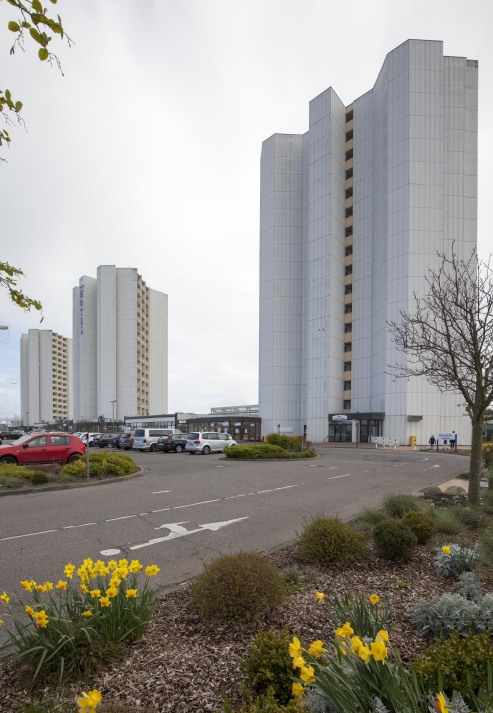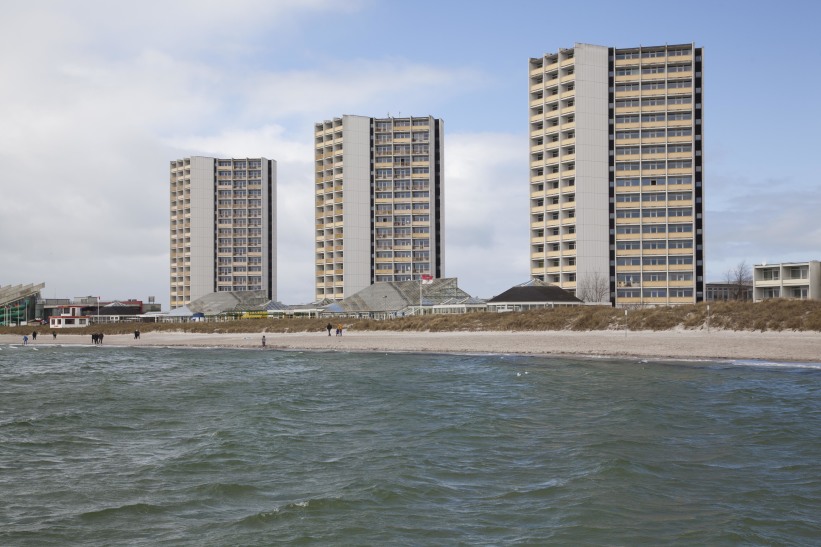Arne Jacobsen / Otto Weitling: IFA High-Rise Buildings With Pavilions (IFA-Hochh√§user mit Pavillons), Ostseeheilbad Burgtiefe, 1965D–1973
- Fehmarn, Germany, Show on map
- #TOU #Western Europe
-
In the 1960s and 1970s, the seaside resort culture boomed in Schleswig-Holstein, with more and more seaside resorts and rehabilitation complexes being built. The Ostseeheilbad Burgtiefe was also built in this context. An international competition was held for the project in 1965, from which Arne Jacobsen and Otto Weitling emerged as the winners. 
The complex was located on Fehmarn's south beach parallel to the coast and comprises a spa center located roughly in the middle, an apartment building, a private bungalow and apartment complex set off to the west by the spa park and an adjacent hotel area to the east consisting of three point buildings, initially planned as four-storey and later constructed as 17-storey high-rises. 
The hotel towers (IFA High-Rises) are the most recognizable feature of the complex. They are based on three-part, so-called ‚ÄúY‚ÄĚ floor plans, giving rise to their imposing shape, which resembles a monumental sculpture. To the north, the fa√ßades of the towers are largely closed by exposed concrete elements, while the buildings open up towards the sea with a grid of balconies. The high-rise buildings are connected by pavilions designed as flat-roofed steel structures on trapezoidal ground plans.
The building is an important part of Arne Jacobsen's late work. As the only Schleswig-Holstein project of six buildings realized by the architect in Germany, it also represents the Scandinavian architecture of the 20th century in the Schleswig-Holstein region.
-
Despite some alterations, such as the demolition of the Kurmittelhaus in 2008 and the redesign of the first floor zone of the IFA high-rise buildings, the complex of the Ostseeheilbad Burgtiefe has been very clearly preserved in its entirety based on its construction period implementation. As an ensemble, the buildings have been registered as a protected cultural monument within the meaning of the Schleswig-Holstein Monument Protection Act.
Heritage protected since 2016 (last updated on October 11, 2024).

